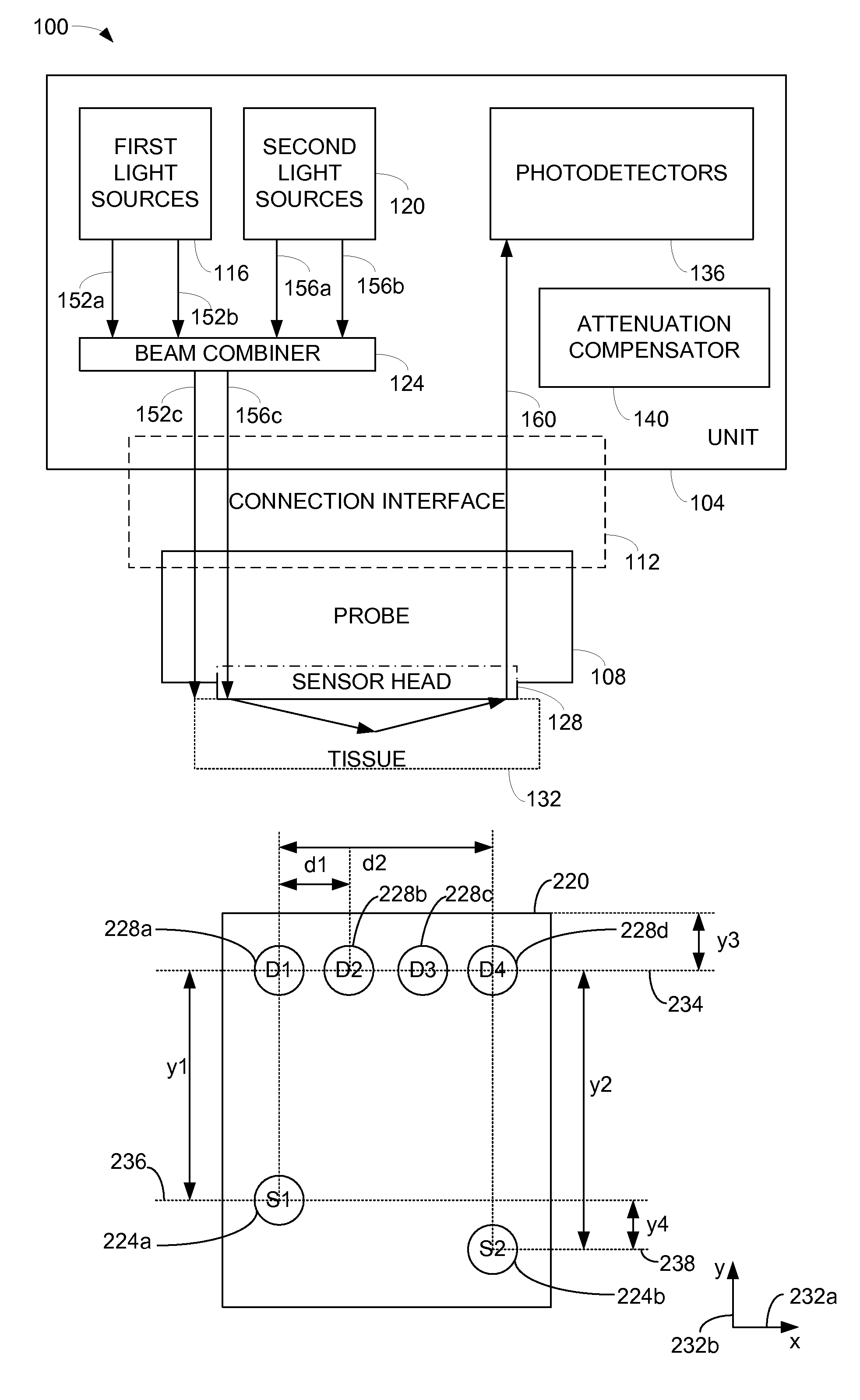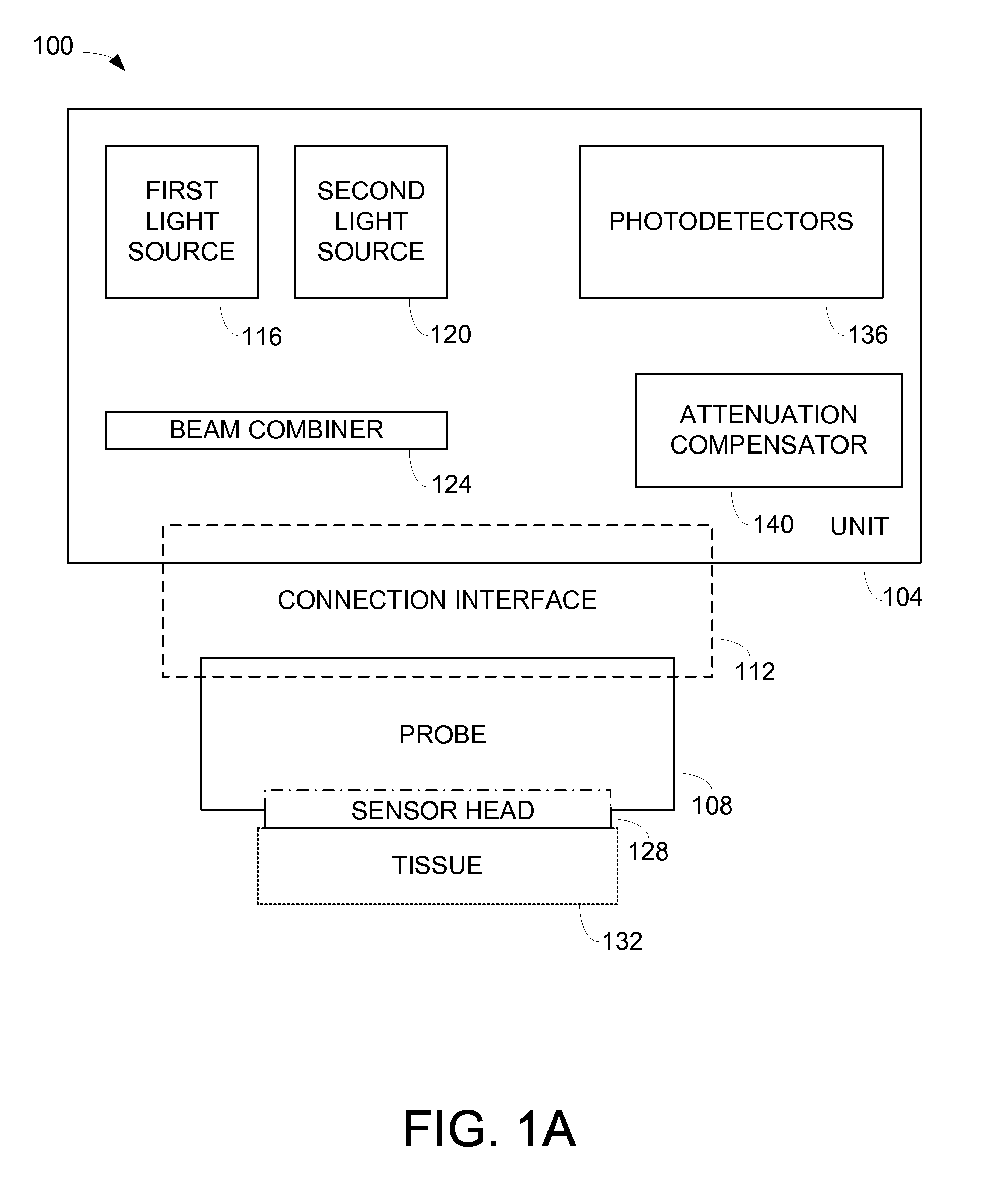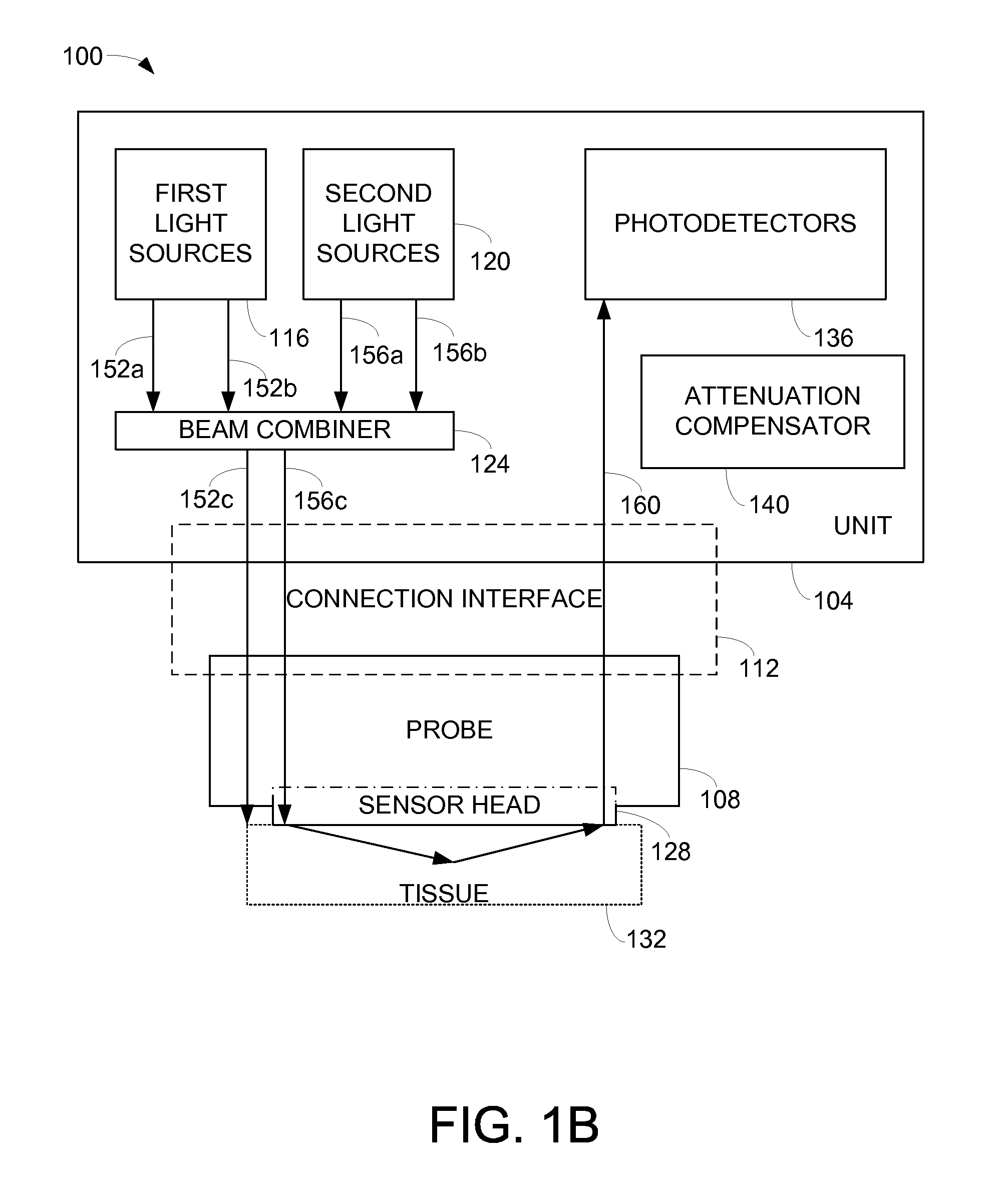Optical probe for optical imaging system
a technology of optical imaging and optical probes, applied in the field of optical probes, can solve the problems of effective loosening of manufacturing tolerances and lack of symmetry, and achieve the effect of loosening manufacturing tolerances
- Summary
- Abstract
- Description
- Claims
- Application Information
AI Technical Summary
Benefits of technology
Problems solved by technology
Method used
Image
Examples
Embodiment Construction
[0028]A sensor head which is such that optical fibers that are coupled to light sources are arranged in an offset orientation relative to optical fibers that are coupled to detectors allows the sensor head to be utilized in areas in which tissue being monitored is not substantially symmetric. Any attenuation associated with the offset orientation of optical fibers that are coupled to light sources is typically compensated for through software. Such a sensor head is relatively easy to manufacture in that the placement of optical fibers that are coupled to light sources is less rigid, i.e., any slight variation in the placement of the optical fibers may be corrected for using the software that compensates for attenuation. In addition, the use of software to compensate for attenuation associated with the placement of optical fibers on a sensor head essentially enables the sensor head to be used with both symmetric and asymmetric tissue anatomies.
[0029]As will be understood by those ski...
PUM
| Property | Measurement | Unit |
|---|---|---|
| length | aaaaa | aaaaa |
| diameter | aaaaa | aaaaa |
| length | aaaaa | aaaaa |
Abstract
Description
Claims
Application Information
 Login to View More
Login to View More - R&D
- Intellectual Property
- Life Sciences
- Materials
- Tech Scout
- Unparalleled Data Quality
- Higher Quality Content
- 60% Fewer Hallucinations
Browse by: Latest US Patents, China's latest patents, Technical Efficacy Thesaurus, Application Domain, Technology Topic, Popular Technical Reports.
© 2025 PatSnap. All rights reserved.Legal|Privacy policy|Modern Slavery Act Transparency Statement|Sitemap|About US| Contact US: help@patsnap.com



